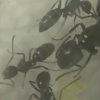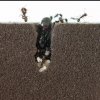- Formiculture.com
- Forums
- Gallery
- Members
- Member Map
- Chat

Can I do a working grout formicarium without perlite?
Started By
CamponotusLover
, Sep 8 2018 4:05 PM
ants
5 replies to this topic
#1
 Offline
-
Posted September 8 2018 - 4:05 PM
Offline
-
Posted September 8 2018 - 4:05 PM
Okay so, I know, dumb question. I never have perlite and always forget to purchase some, I currently have a bowl of grout and am genuinely curious if I can make a working formicarium without perlite. I have white sand, not sure if I can do anything with that though. Any chance I can still make this formicarium I want and still be able to hydrate it?
#2
 Offline
-
Posted September 8 2018 - 7:55 PM
Offline
-
Posted September 8 2018 - 7:55 PM
Hi CamponotusLover, no such thing as a dumb question. You can go ahead with a 2:1 ratio of the grout and water. Is the grout you have the sanded or non-sanded version? The white sand you add will add strength to the final mix, but will unfortunately make it more or less impermeable to water. Grout is basically cement, so think about what concrete is: A mix of small pebbles, fine aggregates, water and a binding agent. You would have a tough time trying to push any water through that.
However, a nest that passively absorbs water is not the only way to "hydrate" a nest. Think about pure acrylic nests - acrylic does not absorb water but works fine as nesting material. You can achieve your goal by finding other ways to increase relative humidity (RH%) inside your nest. Ants do not necessarily require a "water bowl", just a humid environment to take care of their brood.
I have an idea for you. Take a piece of vinyl tubing, poke some holes with it and plug it up with cotton or tape a mesh around it. Incorporate this hydrating mechanism into your final design, making sure that the holes/cotton are exposed to the inside of the nest so the water can evaporate. Make sure the cotton is moist all the way through. Simply pour the grout around this tube. Refill the tube as needed, making sure to plug the other end so the water evaporates out the other side only.
In short, yes you can certainly create a working grout formicarium without perlite.
- CamponotusLover likes this
#3
 Offline
-
Posted September 8 2018 - 9:29 PM
Offline
-
Posted September 8 2018 - 9:29 PM
Hi CamponotusLover, no such thing as a dumb question. You can go ahead with a 2:1 ratio of the grout and water. Is the grout you have the sanded or non-sanded version? The white sand you add will add strength to the final mix, but will unfortunately make it more or less impermeable to water. Grout is basically cement, so think about what concrete is: A mix of small pebbles, fine aggregates, water and a binding agent. You would have a tough time trying to push any water through that.
However, a nest that passively absorbs water is not the only way to "hydrate" a nest. Think about pure acrylic nests - acrylic does not absorb water but works fine as nesting material. You can achieve your goal by finding other ways to increase relative humidity (RH%) inside your nest. Ants do not necessarily require a "water bowl", just a humid environment to take care of their brood.
I have an idea for you. Take a piece of vinyl tubing, poke some holes with it and plug it up with cotton or tape a mesh around it. Incorporate this hydrating mechanism into your final design, making sure that the holes/cotton are exposed to the inside of the nest so the water can evaporate. Make sure the cotton is moist all the way through. Simply pour the grout around this tube. Refill the tube as needed, making sure to plug the other end so the water evaporates out the other side only.
In short, yes you can certainly create a working grout formicarium without perlite.
I.flippin.love.it. thank you! I will try this! Oh my goodness yes!!
#4
 Offline
-
Posted September 8 2018 - 9:46 PM
Offline
-
Posted September 8 2018 - 9:46 PM
Just a side note, avoid acrylic nests. They are an extremely poor nesting material. I've tried lots of them, many from China and even an AC Omni nest XL (it was for a make a wish child who insisted on buying it), and they simply don't work as good formicariums. You will get lots of worker deaths.
While some species may do OK in them, they will not thrive. I don't know why people keep selling them. To our eyes they look nice and shiny, but the ants don't do well in them. The reason they don't work is exactly your explanation - they don't absorb water. They don't "breathe" well like the natural earth or the wood of trees. Ants secrete all kinds of pheremones, CHCs, formic acid, etc - and if these scents do not have a way to naturally escape, it can be harmful to them.
Have any of you actually seen an acrylic nest with a large thriving colony of ants? Rarely, if ever. They are always sold with nice fancy pictures completely antless.
However, a nest that passively absorbs water is not the only way to "hydrate" a nest. Think about pure acrylic nests - acrylic does not absorb water but works fine as nesting material. You can achieve your goal by finding other ways to increase relative humidity (RH%) inside your nest. Ants do not necessarily require a "water bowl", just a humid environment to take care of their brood.
- CamponotusLover likes this
Instagram:
nurbsants
YouTube
California Ants for Sale
Unidentified Myrmecocystus
https://www.formicul...ls-near-desert/
Undescribed "Modoc"
https://www.formicul...mp-ca-5-4-2017/
Camponotus or Colobopsis yogi:
https://www.formicul...a-ca-1-28-2018/
Camponotus us-ca02
https://www.formicul...onotus-us-ca02/
Unidentified Formica
https://www.formicul...l-ca-6-27-2020/
Pencil Case and Test Tube Formicariums
https://www.formicul...m-and-outworld/
Bloodworm Soup
https://www.formicul...bloodworm-soup/
#5
 Offline
-
Posted September 8 2018 - 10:02 PM
Offline
-
Posted September 8 2018 - 10:02 PM
I'm using unsanded grout, I added sand to some mixes but the last two I just used it straight. I can tell by the colour changes that it is absorbing water to a certain extent. I believe both dpsdrew and crystals conducted experiments with various mixes in diy threads, a search should reveal them but if I remember it was the rate of absorption that differed, the straight grout absorbed water eventually.
#6
 Offline
-
Posted September 8 2018 - 11:00 PM
Offline
-
Posted September 8 2018 - 11:00 PM
Just a side note, avoid acrylic nests. They are an extremely poor nesting material. I've tried lots of them, many from China and even an AC Omni nest XL (it was for a make a wish child who insisted on buying it), and they simply don't work as good formicariums. You will get lots of worker deaths.
While some species may do OK in them, they will not thrive. I don't know why people keep selling them. To our eyes they look nice and shiny, but the ants don't do well in them. The reason they don't work is exactly your explanation - they don't absorb water. They don't "breathe" well like the natural earth or the wood of trees. Ants secrete all kinds of pheremones, CHCs, formic acid, etc - and if these scents do not have a way to naturally escape, it can be harmful to them.
Have any of you actually seen an acrylic nest with a large thriving colony of ants? Rarely, if ever. They are always sold with nice fancy pictures completely antless.
However, a nest that passively absorbs water is not the only way to "hydrate" a nest. Think about pure acrylic nests - acrylic does not absorb water but works fine as nesting material. You can achieve your goal by finding other ways to increase relative humidity (RH%) inside your nest. Ants do not necessarily require a "water bowl", just a humid environment to take care of their brood.
I'm using unsanded grout, I added sand to some mixes but the last two I just used it straight. I can tell by the colour changes that it is absorbing water to a certain extent. I believe both dpsdrew and crystals conducted experiments with various mixes in diy threads, a search should reveal them but if I remember it was the rate of absorption that differed, the straight grout absorbed water eventually.
I'll keep these things in mind, thank you!
- DaveJay likes this
Also tagged with one or more of these keywords: ants
 |
Ant Keeping →
Ant Keeping Journals →
The Bulldozers (Pheidole Bicarinata)Started by AntsGodzilla , Nov 16 2024 |
|

|
|
 |
Ant Keeping →
Ant Keeping Journals →
Woodland Giants (Camponotus Ca-02)Started by AntsGodzilla , Nov 16 2024 |
|

|
|
Anting →
Ant ID Requests →
ID wantedStarted by cooIboyJ , Oct 1 2024 |
|

|
||
Ant Keeping →
General Ant Keeping →
What do you thinkStarted by AntsGodzilla , Sep 26 2024 |
|

|
||
Anting →
General Anting →
Messor barbarus adopting queenStarted by OliveOilGuy , Sep 23 2024 |
|

|
1 user(s) are reading this topic
0 members, 1 guests, 0 anonymous users
















